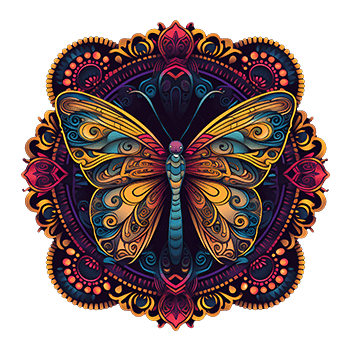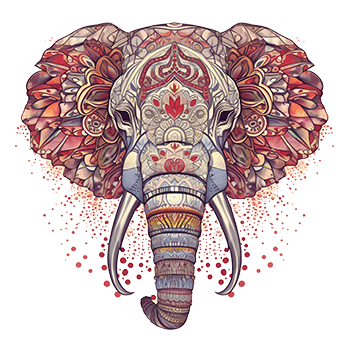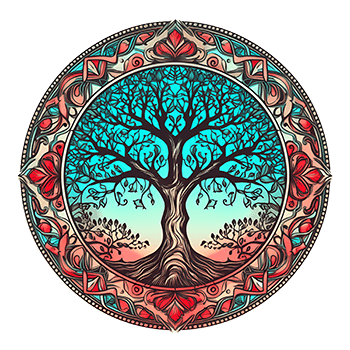Introduction: Mandalas, with their intricate designs and deep spiritual symbolism, have captivated the minds and hearts of people from various cultures and traditions for centuries. As sacred symbols of wholeness, balance, and the journey towards self-realization, mandalas have played a significant role in the spiritual practices of many societies throughout history. In this blog post, we'll explore the cultural roots of mandalas, taking a journey through their historical and spiritual significance in different traditions around the world.
-
Hinduism: The Origin of Mandalas The concept of the mandala can be traced back to ancient Hindu texts, where it was used to represent the cosmos and the divine structure of the universe. In Hinduism, mandalas are often created as sacred diagrams that serve as a meditative aid, helping individuals to focus their minds and achieve spiritual enlightenment. Some of the most well-known Hindu mandalas include the Sri Yantra, a complex geometric design symbolizing the union of the divine feminine and masculine energies, and the Mahamandala, which represents the structure of the universe.
-
Buddhism: Mandalas as a Spiritual Tool In Buddhism, mandalas are used as a tool for meditation and spiritual growth, representing the impermanence of life and the interconnectedness of all things. Tibetan Buddhist monks create intricate sand mandalas as a form of meditation, painstakingly placing colored grains of sand to form elaborate designs. These sand mandalas are then destroyed upon completion, symbolizing the impermanent nature of life and the need for detachment from material possessions.
-
Native American Traditions: The Medicine Wheel In Native American traditions, the Medicine Wheel serves as a mandala-like symbol representing the interconnectedness of all aspects of life, including the physical, emotional, mental, and spiritual realms. The Medicine Wheel is often depicted as a circle divided into four quadrants, each representing a different aspect of life, and is used as a tool for guidance, self-reflection, and healing.
-
Celtic Art: The Knotwork Mandala Celtic art often features intricate knotwork designs that share similarities with the concept of the mandala. These knotwork patterns, also known as Celtic knots, are characterized by their endless, interwoven lines, symbolizing the interconnectedness of all things and the eternal nature of the soul. Celtic knotwork can be found in various forms of art, including illuminated manuscripts, stone carvings, and metalwork, serving as a visual representation of the spiritual beliefs and values of the Celtic people.
-
Modern Interpretations: The Global Appeal of Mandalas In recent years, mandalas have gained widespread popularity in Western culture, with many people embracing their spiritual symbolism and using them as a tool for meditation, relaxation, and self-expression. The beauty and intricacy of mandala designs have inspired countless artists, who have adapted and reinterpreted the traditional concept to create their unique mandala artwork. Additionally, mandalas have found their way into modern-day practices such as yoga, where they are used to promote balance, focus, and a sense of inner harmony.
Conclusion: The cultural roots of mandalas span across various traditions and societies throughout history, reflecting the universal human desire for spiritual growth, self-realization, and a deeper understanding of the world around us. As a sacred symbol of unity, balance, and interconnectedness, the mandala continues to inspire and captivate people from all walks of life, serving as a timeless reminder of the profound wisdom and beauty inherent in our spiritual journey.








